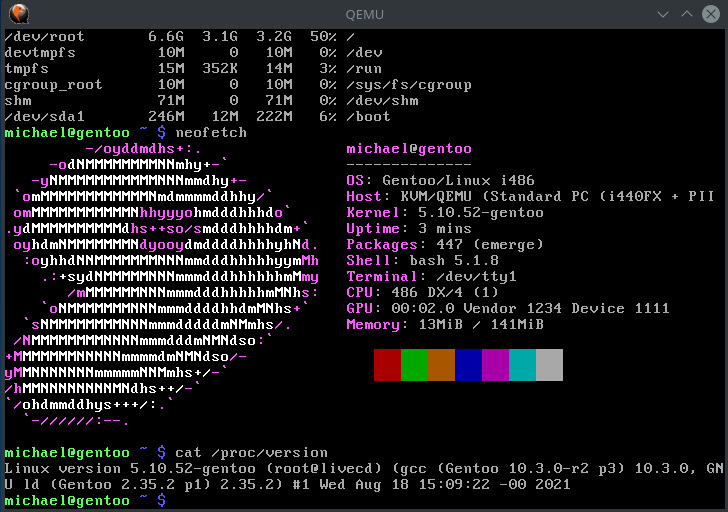RetroFish is based on Stockfish, the strongest chess engine. It aims to port the most recent version to the oldest possible machine, including the NNUE evaluation based on efficiently updatable neural networks.
My key motivation is an impossible question: Would the artificial general intelligence of the future run on present hardware? Would it run on even older hardware? Perhaps all we need for real machine intelligence is the right algorithm? This problem is also known as "hardware overhang". (Some of my thoughts: 1, 2, 3).
There is a way to gather some insight regarding these questions. We can take modern AI algorithms, port them backwards as much as possible, and examine the effects. As usual, making real experiments is most useful.
In 1997, the IBM supercomputer "Deep Blue" defeated the world chess champion, Gary Kasparov. The same was possible for chess engines running on standard computers about a decade later. Modern algorithms like Stockfish can beat any human player, even when running on mobile phones. Let us take the best engine of today, and run it on old hardware. Does that even work? How strong will it be?
To make this experiment somewhat realistic, I will stick to standard hardware and skip over exotic supercomputers. Inside this scope, there are several limitations to consider.
Stockfish 14 uses a neural network with a size of 45 MB, plus a few MB for the engine, plus some hash for the search tree. In addition, we want to run an operating system and a way to transmit the best moves (e.g., an SSH session). I find that 64 MB are sufficient with swapping (reducing performance), and 128 MB should be fine. This requirement immediately excludes PCs from the 386 era and older, except perhaps exotic server hardware or MIPS/RISC hardware. I may look into these at a later time. The following generation of 486 CPUs, however, provides several consumer class mainboards which support 256 MB of RAM. Back in the days, a configuration with 4 or 8 MB was typical. In 1990, a set of 256 MB of RAM chips would have cost the equivalent of a nice car. Today, we can buy the hardware on a flea market (and hope it still runs). Fittingly, the 486DX is described as (1992 commercial):
"Want to run your windowing software fast? Then you need a power source inside your PC that offers high performance and the power to cope with tomorrow's advanced applications! It's called the Intel 486 DX2 processor and it is compatible with all popular software..."
Can we run Stockfish on a 486 with a lot of RAM? Yes, we can! It is not trivial, but most of the compexity is in the operating system and compiler chain. Stockfish is open source, so we can modify and (try to) compile it. There are two main OS options: Windows and Linux. Current Windows 10 doesn't run on a 486, and it is increasingly difficult to compile SF for Windows 98, which does run on a 486. Due to my familarity with Linux, I tried the other route. Building on this great tutorial, I managed to install Gentoo Linux with the most recent Kernel 5.10 on a 486 machine. Here is a screenshot of the installation from a VM:
Using a recent software stack is very useful, because SF14 requires a C++-17 compiler to build (there is also the CFish port which only requires C-11). Using GCC-10 or GCC-11, we can build Stockfish on the 486 with some Makefile modifications.
git clone https://github.com/hippke/RetroFish.git --depth=1
cd Retrofish/src
make build
bash retrofish.sh
With file retrofish we see:
retrofish: ELF 32-bit LSB pie executable, Intel 80386, version 1 (SYSV),
dynamically linked, interpreter /lib/ld-linux.so.2, for GNU/Linux 3.2.0, stripped
Yes, I plan to run this on a real 486 DX2-66 MHz manufactured in 1992. It can also be run on a 486 DX-33 MHz from 1989 at half speed. I plan to add a Youtube video of the system in action.
Why not just use a VM?
- For the fun of it!
- As a real benchmark: It is very difficult to adjust RAM latency etc. in a VM. To really determine the speed, let's use real hardware from around 1990 :-)
On a 486DX2-66 MHz, it calculates about X kNodes per second. Under standard tournament chess time control (120 minutes for 40 moves, i.e. 3 minutes per move), it calculates X kNodes per move. For comparison, an AMD Ryzen 9 5950X 16-Core achieves 55 MNodes/s, making it X times faster. Following my ELO-with-nodes estimate, the 486 playing strength should be in the XXXX ELO range. There is a handicap for Blitz: The 486 machine needs X seconds per move to transfer the result via SSH.
Yes, soon! I plan to provide a Lichess bot against which you can play for free. Good luck!

